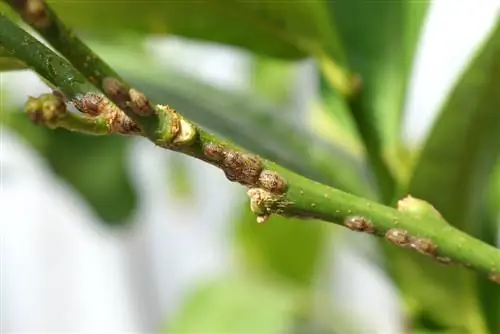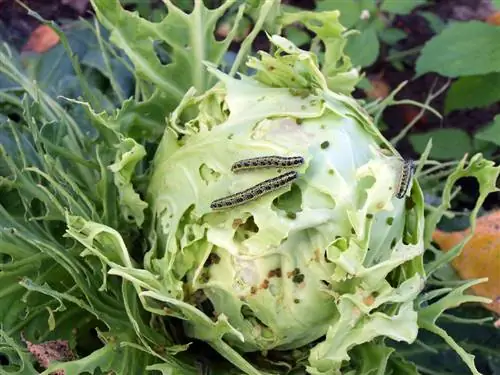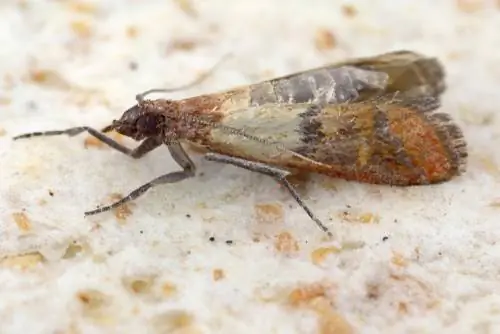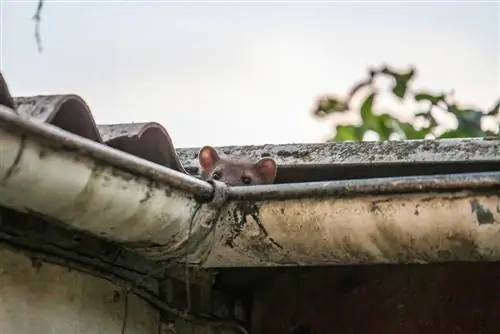- Author admin [email protected].
- Public 2023-12-16 16:46.
- Last modified 2025-01-23 11:22.
Not one, two or three! Far more pest species settle on citrus plants! Some people don't even shy away from the acidity of the fruit and nibble on it. Others, however, suck the sap from fresh shoots. They are all dangerous.
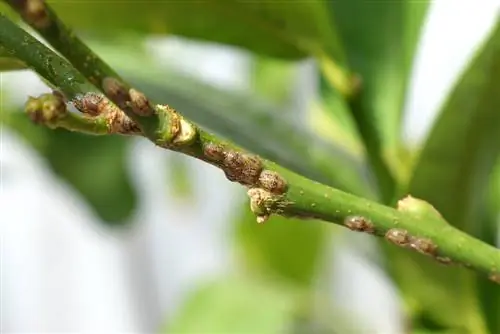
What pests occur on citrus plants and how can you combat them?
The most common pests on citrus plants include black weevils, leaf miners, scale insects, spider mites, snails and mealybugs and mealybugs. Control measures include collection, wiping with alcohol or the use of gentle or biological agents.
Bigmouth Weevil
If you notice bay-shaped, eaten leaves on your citrus plant, this type of beetle may be responsible.
- The adult beetle is approx. 1.5 cm tall and brown
- he shows himself and only eats in the morning and evening
- track down and collect at these times
- the larvae live in the potting soil, where they eat roots
- They are up to 1 cm long, yellow-white and curved
- Control is possible with nematodes
Tip
Repotting a citrus plant is a good opportunity to examine the old soil for black weevil larvae, which are usually found beneath the roots.
leather fly
The larvae of this type of fly live in the leaves, where they leave winding feeding passages behind. The passages have a silvery-white or yellowish color and can therefore also be seen from the outside. Initially, only the ornamental value of the citrus plant is affected. If the infestation is larger, it will also be weakened. You should remove heavily infected leaves, otherwise the larvae inside can be crushed.
Scale insects
Scale insects live in the leaf axils or on the undersides of the leaves. They suck plant sap and thus damage the citrus plants. For smaller infestations, collect the animals or wipe leaves with rubbing alcohol. Then check the plants at regular intervals to see whether new specimens have hatched from eggs you overlooked. If the infestation persists, use a gentle remedy against the eggs.
Spider mites
The approximately 1 mm large, red arachnids love warm and dry air. Especially if you overwinter your citrus plant in the living room, you should pay attention to the following:
- tiny, silvery-gray dots/spots on the leaves
- fine webs on the shoot tips
- small arachnids on the undersides of the leaves
- if applicable. dried or yellow leaves
An infestation in the early stages is controlled mechanically by repeatedly rinsing the animals off the plant with a spray bottle. Otherwise, a biological control agent should be chosen for citrus plants.
Snails
If your citrus plants are outside in the garden in summer, slugs could become a problem. It's the fruits that have to believe in it, while the foliage doesn't seem to taste good to them. Collect the animals or take other action against them.
mealybugs and mealybugs
Mealybugs and mealybugs attack all types of citrus. They live in the leaf axils and on the undersides of leaves, where they are easily visible to the naked eye. Collect them or wipe the areas with rubbing alcohol. Then check the citrus plant at regular intervals to see whether new specimens have hatched from eggs that were overlooked. If the infestation is persistent, you must use a gentle agent against the eggs.

